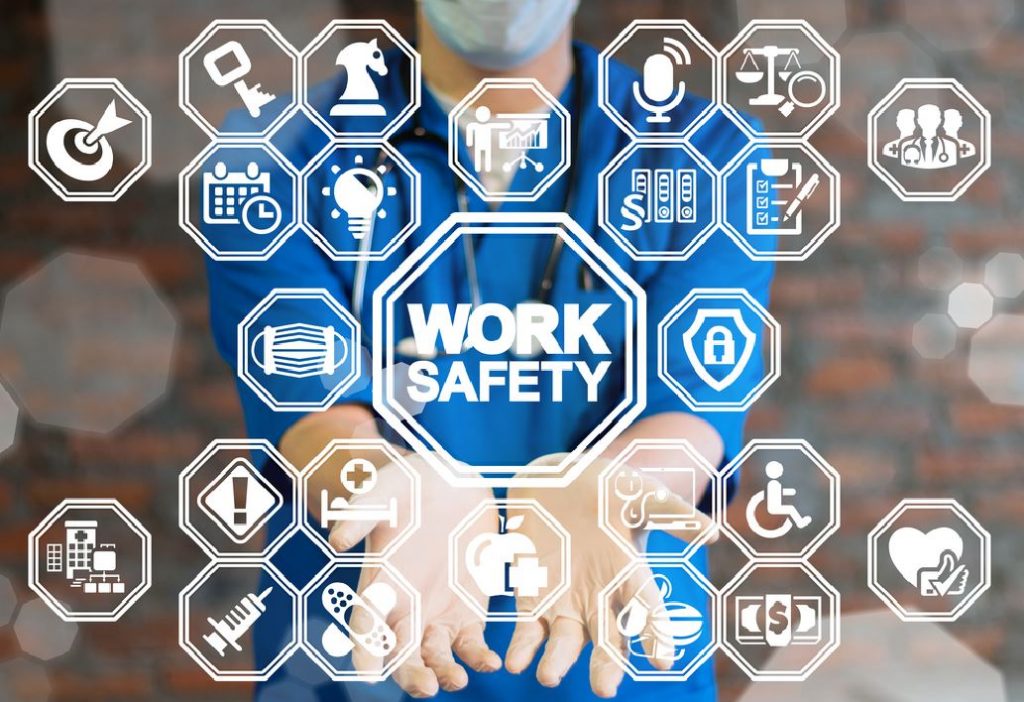
Did you know that slip and fall accidents are one of the leading causes of injuries on commercial and residential premises? According to recent statistics, these incidents are more common than you might think, and their consequences can be severe.
Office accidents can be a real drag on productivity, with slips and falls being the most common culprit. But fear not! By following some simple safety tips, you can create a happier, healthier, and more productive work environment for everyone. In this blog post, we’ll explore the importance of preventing slip and fall incidents on your property and provide actionable tips to help you create a safer environment for everyone. So, let’s lace up our safety boots and take a proactive approach to minimizing these risks.
Understanding the Risks
Slip and fall incidents may seem minor, but their consequences can be far-reaching. From physical injuries to legal liabilities and financial burdens, these accidents pose significant risks for property owners and occupants alike.
- Injuries: Slip and fall accidents can result in a wide range of injuries, from minor bruises to severe fractures or head trauma. Even seemingly harmless falls can lead to long-term health complications, affecting both the injured individual and their quality of life.
- Liability: Property owners may face legal repercussions if someone is injured due to negligence in maintaining safe premises. Lawsuits stemming from slip and fall incidents can result in hefty settlements, tarnishing the reputation of businesses or individuals and causing financial strain.
- Financial Cost: Beyond legal expenses, slip and fall accidents can incur substantial financial costs. Medical bills, lost wages due to injury-related absences from work, and potential settlements can all add up, impacting both individuals and businesses alike.
Understanding these risks underscores the importance of taking proactive measures to prevent slip and fall incidents on your premises. By prioritizing safety, property owners can mitigate risks and create a secure environment for everyone.
Proactive Prevention Strategies
To mitigate the risks of slip and fall incidents, proactive prevention strategies are crucial. Here are some actionable tips to help you maintain a safe environment on your premises:
Floor Maintenance
Regular cleaning and sweeping are essential to remove debris and spills promptly. Invest in high-quality floor mats at entrances and exits to absorb moisture and prevent slippery surfaces. Opt for slip-resistant floor surfaces in high-traffic areas to enhance traction and reduce the risk of falls.
Lighting
Ensure adequate lighting throughout your premises, especially in dimly lit areas prone to shadows and trip hazards. Consider installing motion-activated lights in specific locations to improve visibility and alertness.
Signage
Clear and visible warning signs for wet floors or uneven surfaces are crucial to alert individuals of potential hazards. Additionally, use directional signage to guide traffic flow and prevent overcrowding in hallways and walkways.
Handrails
Sturdy handrails on stairwells and ramps provide essential support and stability for individuals navigating your premises. Ensure handrails are installed at appropriate heights and securely anchored to prevent accidents.
By implementing these proactive prevention strategies, property owners can significantly reduce the risk of slip and fall incidents on their premises. Remember, prevention is always better than cure when it comes to ensuring the safety and well-being of everyone on your property.
Addressing Specific Concerns
While proactive prevention measures are essential, addressing specific concerns can further enhance safety on your premises. Here’s how to tackle some common issues:
Winter Weather
During the colder months, snow and ice can create hazardous conditions. Implement snow removal protocols to promptly clear walkways and parking lots after snowfall. Use salt or de-icing solutions to prevent ice buildup and ensure safe passage for pedestrians.
Uneven Surfaces
Regular inspections are vital to identify and address cracks, uneven sidewalks, or damaged carpet edges. Repair any uneven surfaces promptly to prevent trips and falls. Clearly mark temporary uneven surfaces with cones or caution tape to alert individuals and prevent accidents.
By addressing these specific concerns, property owners can proactively mitigate the risks associated with slip and fall incidents, particularly during adverse weather conditions or when navigating uneven terrain. With proper maintenance and attention to detail, you can create a safer environment for everyone on your premises.
Promoting a Safety Culture
Creating a safety-conscious culture among staff or tenants is instrumental in preventing slip and fall incidents. Here are some strategies to promote a safety-first mindset:
Raise Awareness: Educate staff or tenants about the importance of slip and fall prevention and the potential consequences of negligence. Highlight the shared responsibility in maintaining a safe environment and encourage everyone to remain vigilant.
Clear Communication: Establish clear communication channels for reporting spills, hazards, or maintenance issues promptly. Encourage open dialogue and empower individuals to speak up about potential safety concerns without fear of retribution.
Safety Training: Provide comprehensive safety training programs for staff to identify and address potential risks effectively. Include instruction on proper cleaning techniques, hazard recognition, and emergency response protocols to equip employees with the knowledge and skills they need to contribute to a safer environment.
By fostering a safety-conscious culture and equipping individuals with the necessary tools and knowledge, property owners can proactively prevent slip and fall incidents and create a collaborative environment where everyone feels empowered to prioritize safety.
A Collective Responsibility
In conclusion, preventing slip and fall incidents on your premises is not just a legal obligation but a moral imperative. The ripple effects of these accidents can be profound, affecting individuals physically, emotionally, and financially. However, by implementing proactive measures, addressing specific concerns, and promoting a safety culture, you can create an environment that prioritizes the well-being of everyone.
Remember, safety is a collective responsibility. By investing in prevention strategies, fostering open communication, and providing ongoing training, you contribute to the overall safety of your premises. So, let’s take the necessary steps to make our spaces secure, welcoming, and free from the risks of slip and fall incidents. Your commitment to safety today ensures a safer, more resilient community tomorrow.